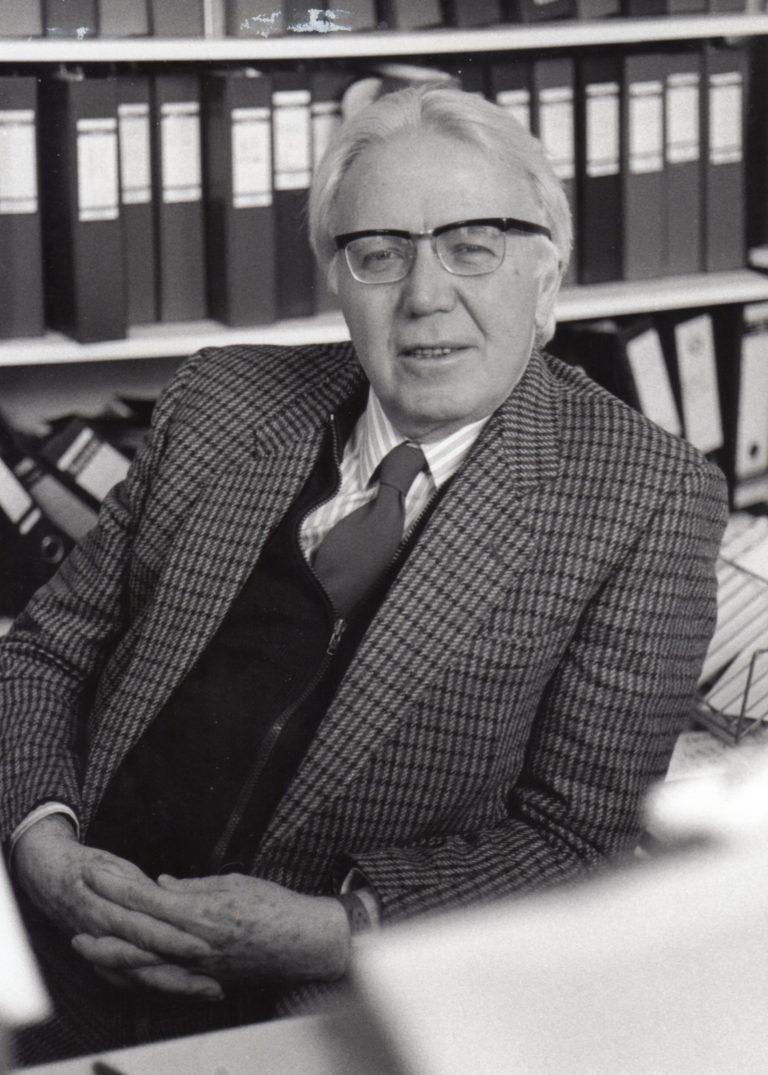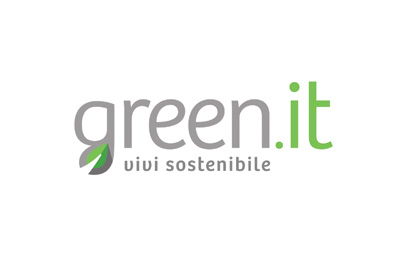Onkalo. Il primo deposito permanente di scorie nucleari



Olkiluoto island, in western Finland, is a flat stretch of land covered by pine trees and bordered on three sides by the Baltic Sea. The nearest town on the mainland is Rauma. With a population of around 34,000, the town is famous for lace-making and colourful, wooden houses. In the middle of Olkiluoto, past kilometres of dark pine trees and a huddle of yellow, blue and grey huts, a metal shutter is set between walls of blasted grey rock. This nondescript doorway is the entrance to something unique: the world’s first – and only – permanent repository for spent fuel. It’s called Onkalo, which means “cavity” in Finnish.
Three of Finland’s five nuclear plants are also situated on Olkiluoto. They are owned by Teollisuuden Voyma Oy (TVO) and Fortum Oyj, the two Finnish energy companies that are jointly responsible for Onkalo. Nuclear power plants produce three levels of radioactive waste: low; intermediate; and high. Low-level waste such as paper, rags, tools and clothing contains small amounts of mostly short-term radioactivity. Intermediate-level waste includes resins, chemical sludge and reactor components. High-level waste is the spent fuel from the power plants or the principal waste separated from reprocessing the fuel. This is the material destined for Onkalo.
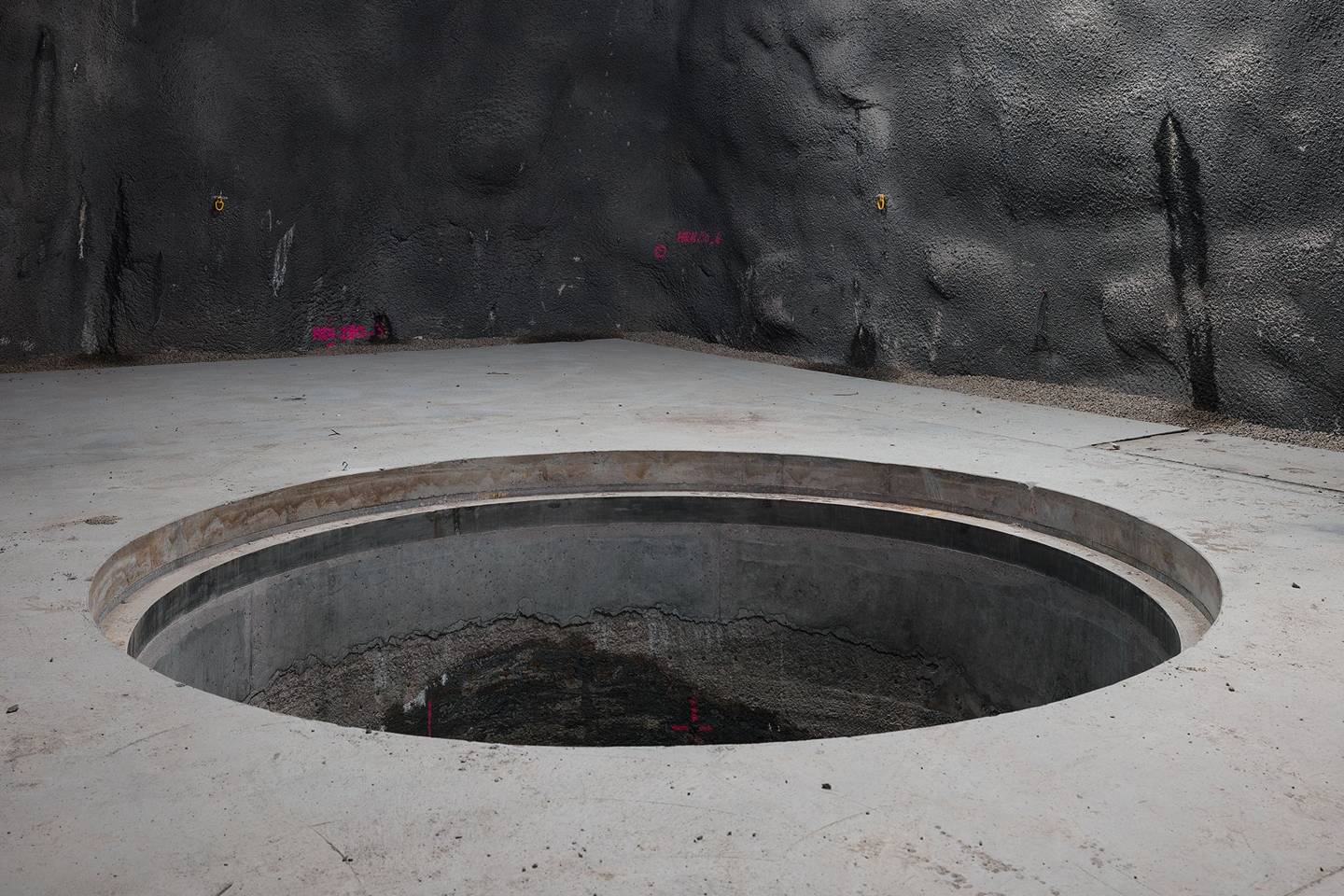
Radioactive waste remains dangerous to humans for millennia. Onkalo exists to protect humanity from its effects. The facility’s construction began in 2004 and, by the time it is completed, will consist of 60 to 70 kilometres of tunnels within an area of around 2km2. Disposal of the spent fuel will begin in the early 2020s and continue for the next 100 years. By the time the final disposal is completed, 3,250 canisters will have been deposited in the tunnels. The canisters will contain around 6,500 tonnes of uranium. The main access tunnel will be backfilled with rubble and concrete, and the entrance sealed. Of course, no one working on the project today will be alive to see this.
Onkalo must last for 100,000 years. A hundred thousand years ago, Europe was in the middle of the Ice Age. Homo sapiens had not yet arrived on the continent, and mammoths and woolly rhinos roamed the landscape. That period is far longer than any man-made structure has survived to date. The oldest Egyptian pyramids are only around 4,600 years old; Stonehenge perhaps 5,000. As a geologist at the site says: Onkalo will last forever
Nuclear radiation is emitted when the nucleus of anunstable atom loses energy, becoming, in the process, stable and non-radioactive. This radiation can take the form of either moving sub-atomic particles, called alpha and beta particles, or electromagnetic gamma waves. Beta particles and gamma waves are powerful enough to penetrate the skin – although beta particles can be blocked by a sheet of aluminium foil. Gamma waves, however, require several centimetres of lead or concrete, or approximately a metre of water. Natural sources of radiation include cosmic rays, as well as certain rocks and soils. Human beings even have their own internal radiation: we are born with radioactive potassium-40 and carbon-14 inside our bodies. Every time we sit next to someone, we expose them to radiation. The effect of this radiation on the body is measured in sieverts. Public Health England estimates that in a typical year, a person in the UK might receive a total dose of two to three millisieverts (mSv) from natural and man-made background – radiation sources. A transatlantic flight, for example, exposes you to 0.08mSv; a dental X-ray to 0.005mSv. The annual exposure limit for employees in the nuclear industry is 20mSv.
In nuclear power plants such as the ones in Olkiluoto, engineers use nuclear fission – the process of splitting the nucleus of an atom of radioactive uranium or plutonium – to heat water, produce steam and drive turbines. The spent fuel that results from this process consists of dark brown ceramic pellets of uranium dioxide sealed into zirconium alloy tubes, or fuel rods. A single uranium fuel pellet is about the size of a fingernail, and four of these pellets contain enough energy to provide a year’s electricity for a family of four living in an electrically heated house.

When first removed from the reactor, the fuel rods containing the uranium oxide pellets are immensely hot (around 800°C) and dangerously radioactive. Stand in front of one and you won’t see, taste, smell or feel anything, but gamma waves will be moving through your body, hitting your cells and damaging their DNA. In most cases the cell dies. In others, it mutates. It is this damage to the DNA that causes the physical effects of radiation sickness, such as nausea, hair loss, vomiting and, in severe cases, haemorrhaging. According to the Princeton-based International Panel on Fissile Materials (IPFM), spent fuel from a reactor initially emits gamma radiation at a dose
rate greater than one sievert per hour. Around 50 per cent of adults exposed to this level of radiation will die in three to four hours.
The World Nuclear Association estimates that there is around 240,000 tonnes of spent fuel across the world. Finland has around 2,000 tonnes; the UK around 6,000. These figures will increase – nuclear power is increasingly viewed as a way of cutting carbon emissions – and new power plants such as the UK’s Hinkley Point C will come into service over the coming years. At current rates of production, around 1.1 million tonnes will be produced worldwide over the next 100 years.
At present, all countries with nuclear power plants keep their spent fuel in containers in interim storage facilities, which are located above ground or near the surface. At Sellafield, spent fuel is kept in storage ponds. According to industry experts, it’s a situation that cannot be maintained indefinitely and arguably places too much of a burden on future generations, who have done nothing to produce the waste. According to a 2011 IPFM report, “Most countries with nuclear-power programmes assume the eventual disposal of spent fuel and high-level radioactive waste will require underground repositories.”
Deep geological disposal aims to isolate the fuel for 100,000 years, so it cannot come into contact with the biosphere until the radioactivity has fallen to safe levels. Once it’s below ground, the major threat to public health comes from water contamination. At Onkalo, disposal plans have been based on the KBS-3 concept developed over the past 30 years by the Swedish Nuclear Fuel and Waste Management Company (SKB), the firm responsible for nuclear-waste management in Sweden. It’s a belt-and-braces approach, known as the multiple-barriers principle. The spent fuel is contained within several overlapping protective barriers, so if one fails, isolation is not compromised.
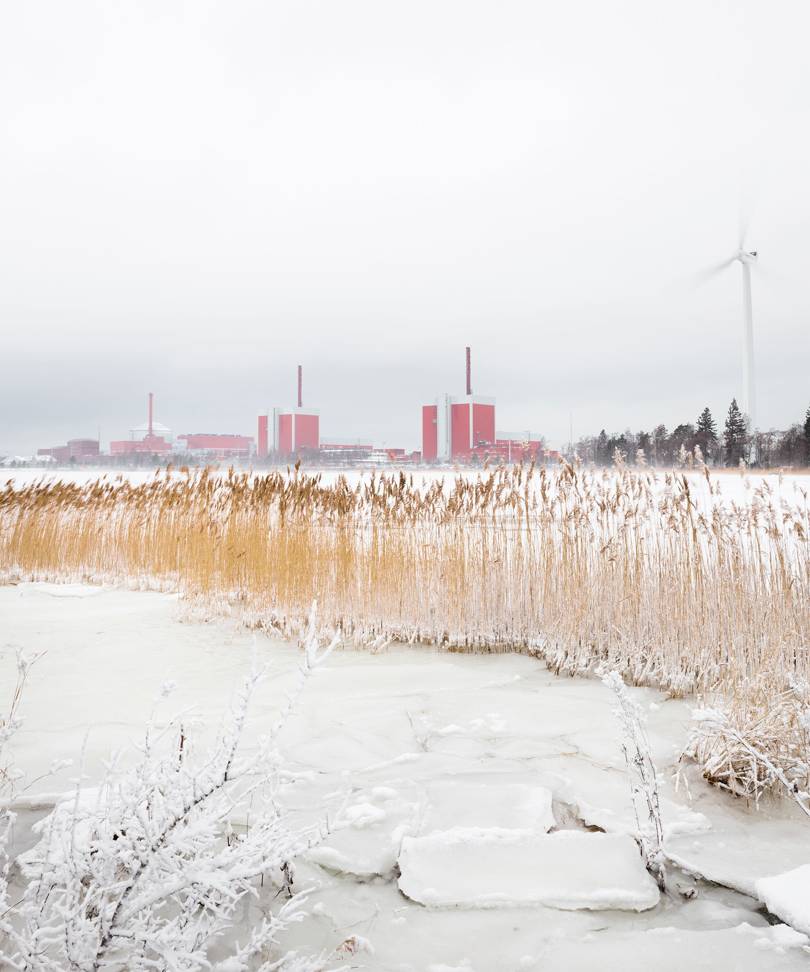
The concept of geological disposal has been advocated since the 70s. Although other ideas for dealing with the waste have been suggested – including shooting it into space, burying it in ocean sediment and dropping it into a gap between tectonic plates – burying nuclear waste underground remains the preferred long-term solution. Though Onkalo is the world’s first geological disposal facility for high-level spent fuel, there are already repositories for low- and intermediate-level waste, including the Asse II waste-storage facility in Germany. So far, however, only Finland and Sweden have approved the construction of geological disposal facilities.
These repositories, however, are technically challenging and financially draining (estimates for a UK facility come in at around £4 billion). Critics of geological disposal schemes usually point to worrying examples of what might go wrong. Between 1967 and 1978, more than 120,000 drums of waste were buried in a former salt mine in Lower Saxony. As with the spent fuel destined for Onkalo, they were supposed to remain there forever, but the mine walls are collapsing due to pressure from surrounding rocks. There are also concerns that water seeping into the facility could get contaminated and move radioactive material to the surface.
Such concerns, of course, make the issue of geological disposal of nuclear waste politically sensitive. In 2010, political pressure forced the US government to abandon its expensive Yucca Mountain repository in Nevada. In 2013, Cumbria County Council voted to reject plans to build a UK facility in West Cumbria. In both instances, the state failed to convince worried locals that their plans for geological disposal were safe and desirable. “It’s the uncertainty that worries us,” says Peter Roche, a campaigner who formerly worked on nuclear issues for Greenpeace and is now a policy adviser for the government organisation Nuclear Free Local Authorities. “Can you ever really know how a certain material will behave in a certain location in 100,000 years time? If you put it down a deep hole and it starts to leak then you have left future generations with something they can’t do anything about.” No one wants a lethal pile of enriched uranium housed permanently in their back yard.
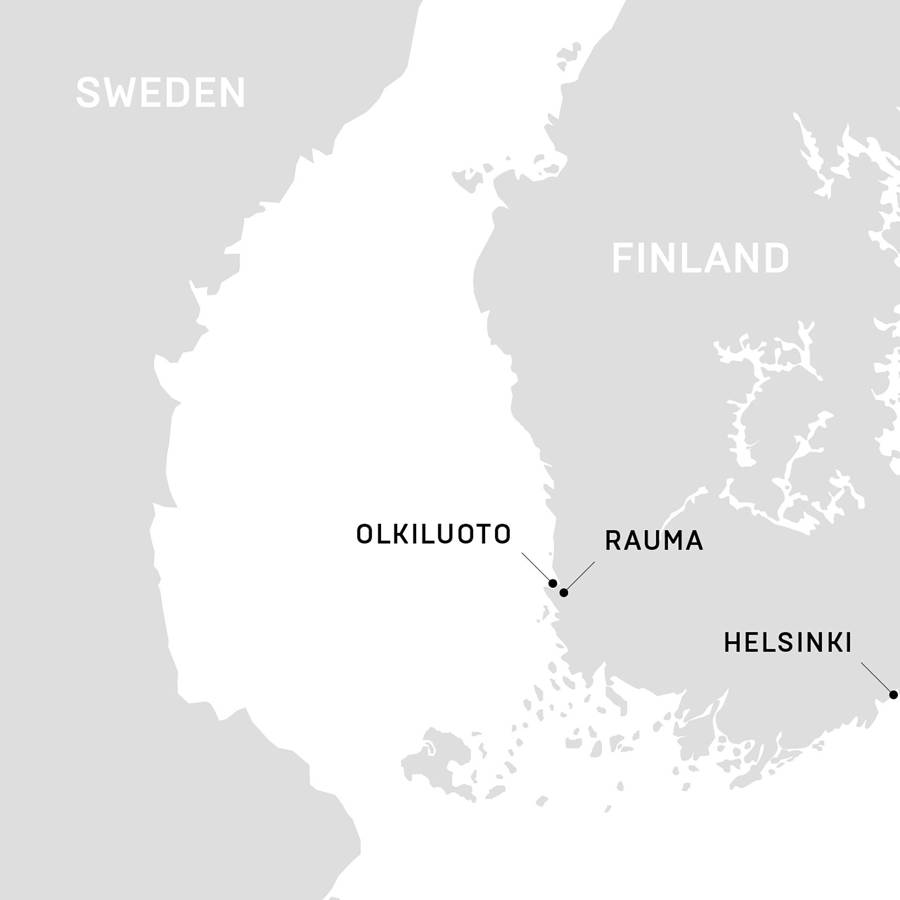
The man responsible for ensuring Onkalo remainsdisaster-free is Jussi Heinonen. In his 30s, Heinonen is the director of the nuclear waste and material regulation department at STUK (the Finnish Radiation and Nuclear Safety Authority). He studied material sciences at Helsinki University of Technology and after graduation, while wondering what to do next, his mother saw an advertisement for an inspector’s job at STUK. “Mother knows best,” he jokes. “I worked first as an inspector, regulating the disposal of canisters. I later took responsibility for developing the regulatory oversight for the construction of Onkalo. Since the beginning of 2016, I’ve been head of the department here.”
Heinonen believes the time has come to jettison interim storage facilities: “With interim storage you are relying on the fact that in several hundred years’ time we will still have a civilised society to take care of the waste. That’s just not really something we can assume will happen.” Although the initial work for Onkalo began in 2004 with the digging of the access tunnel and the technical test tunnels, the licence for the actual repository was only granted in 2015, and in 2020 the firm will apply for the operating licence that grants permission to start depositing the waste in Onkalo.

The process for final disposal of the spent fuel at Onkalo will go as follows: Spent fuel rods are taken from the nuclear reactors and cooled for several decades in the pools of an interim storage facility, decreasing temperature and radiation levels. Bundles of spent fuel rods are then placed inside one-metre-wide canisters made from cast iron, a material selected for its ability to resist mechanical stress. The iron canister is placed inside a five centimetre-thick copper canister that protects it from the corrosive effects of groundwater. Inside Onkalo, the canister is placed in a cylindrical hole padded with bentonite clay, which, in the presence of water, will expand and solidify to protect the canister from rock movements. The clay also stops liquid from reaching the canister and, if there were a canister leak, would stop radioactive substances from reaching the rock.
There are concerns about the safety of this process. According to a paper published in 2012 by researchers at the Royal Institute of Technology in Stockholm, who studied how copper reacts in distilled water, the canisters could corrode within 1,000 years, rather than the 100,000 years estimated by SKB. The Swedish company disagrees with the analysis, arguing that these tests failed to replicate conditions in the bedrock. In addition, they argue, the bentonite and the bedrock will provide future protection for the cannisters.
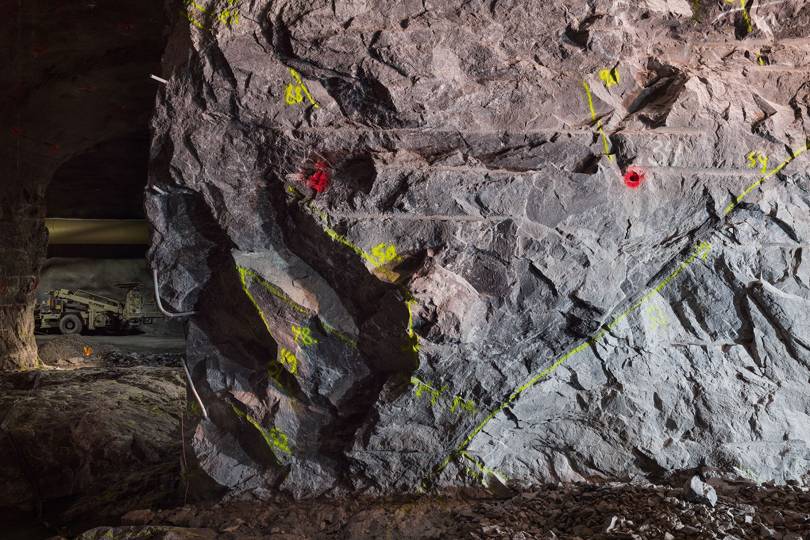
“The issue needs to be studied further,” Heinonen says. “Though at the moment we are not that worried.” In a worst-case scenario, Heinonen explains, water gets into the copper canisters and mixes with the spent fuel. It then travels relatively swiftly to the surface carrying dangerous radio-
nuclides. “It’s a biosphere assessment then,” Heinonen says. “For that we assume there is a group of people living in the area, and everything they eat and drink is from that area.” According to Heinonen, under such conditions a local resident should not receive a radiation dosage greater than 0.1mSv per year.
When Roche’s concerns about the limits of our technical knowledge are raised, Heinonen nods and sighs. “It is true the spent fuel is harmful for a very long time, but what we are maybe not explaining so well is that the harmfulness changes.” The level of radioactivity, for instance, decreases exponentially, with the first 1,000 years being the most dangerous period.
“We are asked, how can you know how material behaves for several tens of thousands of years?” Heinonen says. “We can’t say we know everything, but the first 1,000 years are the most important, and we can be confident about what happens then.”
Tiina Jalonen is senior vice-president of development for Posiva, the nuclear-waste management company that’s overseeing the construction of Onkalo. A metallurgist by training, Jalonen has pale-brown, shoulder-length hair and, despite the snow is wearing smart black high heels. “I think the generations that have produced the nuclear waste should take care of it,” Jalonen says. “We shouldn’t leave it to our kids.”
Although the recent UK geological disposal facility scheme was halted during the public-consultation process, the Finnish experience has been relatively smooth. In 1983, the Finnish government began making plans for a disposal facility, and in 1987 it ruled that the country’s two nuclear energy companies – TVO and Fortum Oyj – should set aside funds for nuclear-waste management. Between 1993 and 2000, investigations were carried out on four sites and local municipalities were invited to volunteer for the project. Consent was highest in the two municipalities – Eurajoki and Loviisa – where TVO and Fortum’s power plants are located. In the end, Olkiluoto in Eurajoki was selected because it had a larger area reserved for the repository. It also helped that most of Finland’s spent fuel was already on the island. TVO pays the municipality a property tax and have provided funding for a care facility for older people.
“People in sites not used to nuclear operators were against it,” Jalonen says. “But here in Eurajoki and Loviisa everyone knows someone who is working there, so they know how things are handled and they have trust. They also see the benefits of hosting the nuclear facility. There is a high rate of employment and the community itself is quite wealthy.”
After speaking to Jalonen, I am taken on a tour of Onkalo, equipped with a hard hat, torch and heavy oxygen tank. We are then put on a minibus and driven downhill, towards the deepest sections of Onkalo.
It’s a working day, but during our descent we see few signs of life. Two men in fluorescent overalls stand where a tunnel branches off. An excavating machine looms out of the darkness like some prehistoric beast. Cables and tubes snake along the ceiling. Electric lights fixed at intervals provide a dim glow. Dark passageways branch off from the main tunnel, which contains a few pools of greenish water.

When we finally get out of the minibus, everything is quiet except for a buzzing noise which, I am told, may have been the lights or the ventilation. After a 20-minute drive, we arrive at the test-hole disposal level, with 420 metres of rock above us, deep in the Finnish bedrock.
Where the bedrock has been left exposed on the tunnel wall, the rock is grey and shot through with white bands. Up close, at the right angle, it appears to sparkle. Earlier, I had spoken to one of Posiva’s geologists, an eager, bearded man called Jussi Mattila. He explained that the Onkalo rock is immensely old – a metamorphic rock formed 1.9 billion years ago when ancient sediments and volcanic rocks were subjected to extreme heat and pressure. Not much has happened since then, which makes it a stable environment for the facility.
“There are different aspects that we need to look at,” Mattila says. “For example, the geochemistry of the water in the bedrock and the rock stresses; what sort of forces are affecting the rock?” Studying rock stresses gives an indication of the pressure that the canisters must be able to withstand. Another challenge is identifying faults and fractures.
The rock at Onkalo is dense and impermeable. This means that the easiest way for contaminated water to reach the surface is via cracks in the rock. This is one reason that disposal occurs between 420 metres and 450 metres below the surface: above 100 metres the rock is more heavily fractured; below 600 metres the rock stresses can become too severe for the canisters.
A second reason for disposing of the nuclear waste at that depth is related to another threat to Onkalo: Olkiluoto’s future climate. At some point during the next 50,000 to 150,000 years there will be another ice age. Posiva has been researching what would happen to the canisters if the temperature of the bedrock fell below freezing, and in particular, whether the bentonite clay will retain its distinctive characteristics.
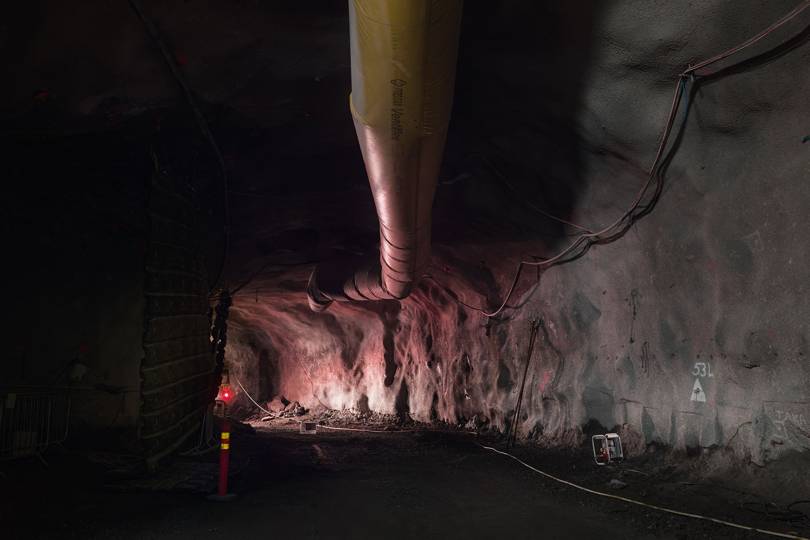
“One reason that we go 420 metres with the depositories is that we are below the level at which we have had the permafrost in previous ice ages,” says Anne Kontula, one of Posiva’s hydrogeologists. She explains that when the ice arrives, it will increase pressure on the bedrock and the canisters will need to withstand approximately four kilometres of ice. When the ice retreats, the release of pressure on the bedrock could cause earthquakes. “After the last glaciation, we had very big earthquakes in northern Scandinavia,” Mattila says. ‘There’s a possibility that we could have an earthquake at the site.”
In 1991, scientists at the Sandia National Laboratories, acontractor for the US Department of Energy’s National Nuclear Security Administration, conducted a thought experiment. They convened two multi-disciplinary groups of academics (including anthropologists, materials scientists and archaeologists) and asked them to design a sign, or marker, that would last 10,000 years and warn future generations about a low- to intermediate-level nuclear-waste disposal facility in the New Mexico desert called the Waste Isolation Pilot Project.
“The marking system must be rooted in basic human concepts and understanding,” one group’s report concluded. Among their suggestions was the creation of a deterrent landscape that is “non-natural, ominous and repulsive”, constructed of giant, menacing earthworks in the shape of jagged lightning bolts, or giant shapes that “suggest danger to the body… wounding forms, like thorns and spikes”. Anyone venturing further into the complex would then discover a series of stone kiosks and standing stones with information about the nuclear waste written in many different languages and levels of complexity, and accompanied by basic pictograms. To help convey the message, there would be carvings of human faces expressing horror and terror, some based, perhaps on Edvard Munch’s The Scream.
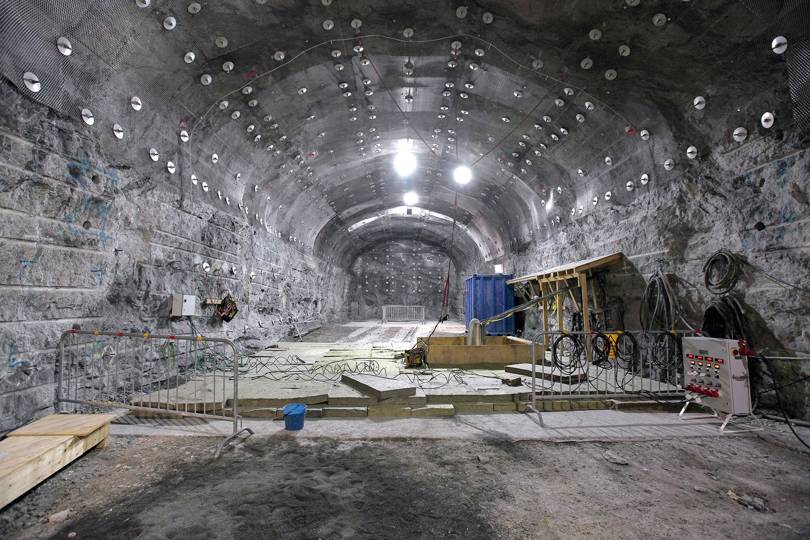
But not everyone agreed that a geological disposal facility required a marker. Some academics recommended the exact opposite: that the site not be marked so as not to draw curious visitors. This is a possible solution for Onkalo, although no plans have been made. What we know is, by the time Onkalo is completed, the tunnels will be backfilled with bentonite pellets and Friedland clay blocks.
The entrance will then be sealed.
After that, Onkalo shouldn’t require maintaining or monitoring. Any inadvertent human intrusion is guarded against through the depth of the facility and the choice of location. It would be a place with no natural resources or anything that could be mined. There would be no drinking water and nothing to encourage people to settle there. If everything goes to plan, no human will ever return. “Geological disposal is the right solution because it is a passive system,” Jalonen says. “From above ground, the site will look just like any other piece of forest or nature.”
After my visit to Onkalo, I return to TVO Visitor’s Centre where I meet Kontula, who is working on the issue of Olkiluoto’s climate. We sit drinking coffee and watch the lights of the power plants glistening in the distance. It’s 4pm and darkness has already fallen. I try to imagine Olkiluoto when the ice appears. Kontula stirs her coffee and smiles. “That’s one of the aspects of the work I like. It has a bigger meaning. It’s about taking care of the dangerous waste that will be there even if we aren’t there.” On the surface, she explains, everything will disappear: all the buildings, trees, grass and rocks. “It’s like when you’re flying and you look down and see only clouds,” she says.”It will be white. Just white.”

Il primo deposito permanente di scorie nucleari
Il tunnel di Onkalo, in Finlandia, resisterà alle insidie del tempo per decine di migliaia di anni. Ci riuscirà grazie a soluzioni ingegneristiche e dispositivi di sicurezza di una semplicità disarmante.
12 SETTEMBRE 2017 | ELISABETTA INTINI
Nel 1980, il geologo finlandese Timo Äikäs si assunse un’enorme responsabilità, per un 29enne: progettare uno spazio dove stipare in modo sicuro e definitivo le scorie nucleari prodotte dal suo Paese.
Oggi, a quasi 40 anni di distanza, quel deposito è quasi ultimato: ben presto la Finlandia diventerà il primo stato al mondo a dotarsi di un magazzino per rifiuti radioattivi pensato per resistere centinaia di migliaia di anni (e fino a un milione: tanti ne occorrono affinché le barre di combustibile nucleare esausto non siano più pericolose).
Per comprendere la portata della sfida, raccontata in un articolo su The Atlantic, si pensi che attualmente, nel mondo, esistono circa 250 mila tonnellate di scorie nucleari alloggiate in depositi temporanei, che iniziano ad accusare i segni del tempo; e che costruzioni che riteniamo antiche, come le piramidi egizie, hanno appena 4500 anni.

NEL BOSCO. L’ingresso del deposito nucleare di Onkalo (un termine finlandese che significa caverna, luogo nascosto, si trova mimetizzato nella densa vegetazione della foresta di Olkiluoto, un’isola scarsamente abitata al largo della costa occidentale della Finlandia. Poco lontano, circondati dagli alberi, sorgono tre reattori.
PIÙ LIVELLI DI PROTEZIONE. Dietro a quella che potrebbe sembrare l’entrata di un grande garage si apre un tunnel che scende fino a oltre 450 metri di profondità. La struttura si apre poi in altre 137 gallerie sotterranee. Quando il deposito sarà funzionante, le scorie saranno sistemate in bidoni di ghisa di 25 tonnellate di capienza, rivestiti di uno strato di rame puro. Ciascuno sarà alloggiato in un vano scavato su misura, rivestito con bentonite (un tipo di argilla che si gonfia a contatto con l’acqua, usata anche nelle lettiere dei gatti).
IMPEREABILE. Il piano di sicurezza di Onkalo è piuttosto semplice. La roccia locale in cui è stato scavato il tunnel, lo gneiss, è geologicamente stabile, e dovrebbe tenere l’acqua alla larga. La bentonite può assorbire ogni traccia di umidità residua, e le acque sotterranee presenti in profondità, sotto il deposito, sono povere di ossigeno e poco corrosive. Il rame è una delle sostanze più stabili della Terra e se anche l’acqua arrivasse ai bidoni, impiegherebbe milioni di anni a corroderne il rivestimento. Nel frattempo, le scorie al suo interno si sarebbero degradate a materiali non più pericolosi per l’ambiente e per l’uomo.

VIETATO ENTRARE. Anche la questione di come comunicare la pericolosità del luogo e del suo contenuto ai terrestri di domani è stata affrontata senza troppi orpelli. Se tra 100 mila anni l’umanità non si sarà ancora estinta, i nostri successori difficilmente sapranno comprendere la nostra lingua e altri codici di comunicazione non linguistici: si pensi a quanta fatica facciamo a capire il significato del sito di Stonehenge, eretto 5000 anni fa. Solo 10 mila anni fa, eravamo cacciatori-raccoglitori.
MIMETIZZARSI. In passato sono state proposte soluzioni fantasiose come una serie di pietre acuminate a guardia dell’entrata, o generazioni di gatti ogm che diventino fluorescenti a contatto con le esalazioni radioattive. Gli ingegneri di Onkalo hanno in mente qualcosa di più semplice: lasciare che il deposito passi inosservato, e finisca dimenticato per sempre.

LASCIATO ALL’OBLIO. Senza la necessità di sorveglianza o il bisogno di elettricità a mantenerlo, la soluzione più sicura è che se ne ignori l’esistenza. Attorno al 2100, quando avrà raggiunto la sua massima capacità, gli ingressi dei tunnel saranno sigillati con blocchi di roccia assorbente. La foresta ne coprirà l’entrata, e il deposito è stato scavato in luoghi poco appetibili per eventuali scavi minerari.
I PROSSIMI PASSI. Äikäs è andato in pensione nel 2014. Oggi i suoi successori lavorano per riuscire a concludere le prove generali di conservazione delle scorie – con barre posticce, ma contenitori e tunnel originali – entro il 2022. Nel 2024 dovrebbero essere accolti i primi rifiuti pericolosi, con un processo che potrebbe durare un centinaio di anni, fino ad esaurimento spazio.

